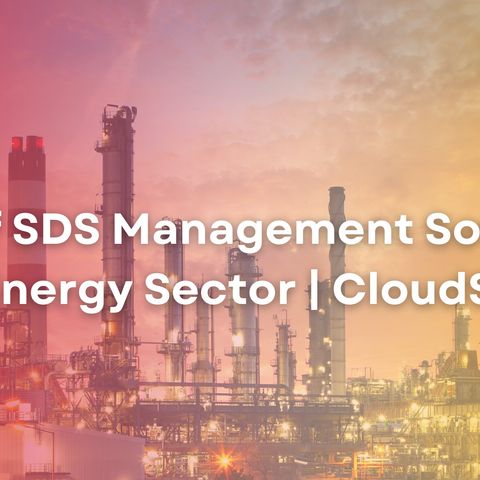Paul T. Anastas, an organic chemist at the EPA, and John C. Warner developed the Twelve Principles of
Green Chemistry in 1991. Their goal was to change how chemicals are designed, made, and used to support environmental sustainability and human health. These principles focus on preventing pollution, reducing waste, and minimizing hazardous substances. By promoting safer and more efficient chemical processes and products, green chemistry aims to lower the environmental impact of chemical manufacturing. Below we have explained the 12 green chemistry principles in detail. Take a look to learn in detail.
Designing chemical processes to minimize waste is essential. It reduces the need for waste treatment and disposal and also makes every manufacturing process more efficient and environmentally friendly. In simple terms, it aims to produce no waste that needs to be treated or cleaned up. A useful metric, known as the environmental factor (E factor), helps measure the waste produced by a process. It is calculated by dividing the mass of waste generated by the mass of the product obtained. The goal is always to achieve a lower E factor.
- Designing Less Hazardous Chemicals:
According to this, creating chemical products that are effective and safe for human health and the environment is always helpful. This principle promotes using non-toxic substances whenever possible. It also encourages facilities to avoid producing hazardous waste, making disposal simpler and reducing environmental impact.
This principle is similar to the previous one. Chemical manufacturers should create products that work effectively without being excessively toxic to humans. Designing safer chemicals involves understanding how they interact with our bodies and the environment. While some level of toxicity may be unavoidable, alternatives should always be explored.
This principle highlights the importance of using the maximum amount of starting materials in the final product. Atom economy measures how many atoms from the starting materials end up in the useful product. Reactions that produce useless side products lower atom economy. It can create more waste. Moreover, any type of manufacturing process with a high atom economy is preferred.
- Safer Solvents and Reaction Conditions:
This principle emphasizes selecting safer solvents to reduce risks to human health and the environment. Water and supercritical CO2 are examples of safer solvents. Many chemical reactions need solvents or agents to facilitate the process, but these can pose hazards. Therefore, facilities should carefully choose minimally harmful solvents. Moreover, it can be recycled(if possible).
- Design Energy-Efficient Processes:
In green chemistry, energy-intensive manufacturing processes are discouraged. According to it, facilities should develop chemical processes that require less energy. This can involve using milder reaction conditions, such as lower temperatures and pressures. It’s also possible if reactions are carried out at normal room temperature and pressure. Removal of solvents, or processes to remove impurities, can increase the energy required. An energy-efficient process also helps reduce costs and environmental impact.
- Use Renewable Feedstocks:
Any firm that manufactures chemical products should prioritize using renewable raw materials. Depleting natural resources is harmful to the environment. Renewable feedstocks often come from agricultural products or the wastes of other processes, while non-renewable feedstocks typically come from fossil fuels like petroleum, natural gas, or coal, as well as mining operations. Using renewable feedstocks, such as chemicals derived from biological sources, makes manufacturing processes more sustainable.
- Chemical Derivatives should be Avoided:
Avoid using blocking or protecting groups or any temporary modifications whenever possible. After all, these derivatives require additional reagents and generate waste. Many facilities have found that particular enzymes can target specific parts of a molecule’s structure without protecting groups or derivatives. This approach can reduce the chemical process’s complexity, cost, and environmental impact.
Minimize waste using catalytic reactions, as catalysts are effective in small amounts and can perform a reaction multiple times. Catalysts produce less waste than stoichiometric reagents, used in excess and only carry out a reaction once. Furthermore, catalysts can often be reused, enhancing the sustainability of the process.
- Design Chemicals for Degradation:
Chemical production should avoid creating materials that don’t break down easily. Facilities should design products that decompose into harmless substances after use to prevent environmental accumulation. Harmful substances, like halogenated compounds (e.g., DDT), should be replaced with alternatives that break down more easily through water, UV light, or biodegradation.
- Real-Time Pollution Prevention:
Develop methods for real-time monitoring and control of chemical processes to prevent hazardous substance formation. Regular monitoring during chemical reactions helps identify and stop the release of harmful substances, allowing for timely and effective intervention.
- Prioritize Accident Prevention:
Design chemicals and processes to minimize the risk of accidents. Facilities should produce less hazardous chemicals, ensuring products with manageable risks are always preferred. This principle is closely related to other principles addressing hazardous products or reagents. Facilities therefore must eliminate exposure to hazards from processes wherever possible. If elimination is not feasible, design processes to minimize risks effectively.

